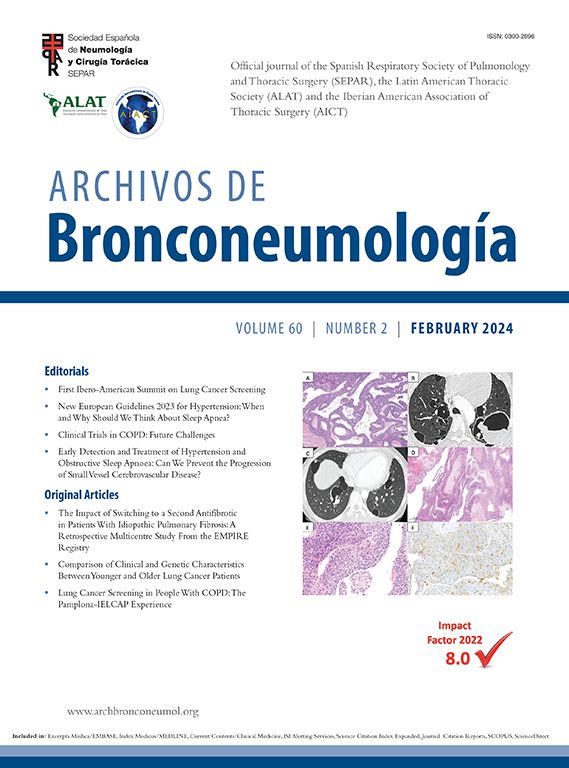利用 DIA 质谱仪对血清和尿液进行定量蛋白质组学分析,揭示小儿阻塞性睡眠呼吸暂停的生物标记物
IF 8.7
3区 医学
Q1 RESPIRATORY SYSTEM
引用次数: 0
摘要
目的探索适合儿童阻塞性睡眠呼吸暂停(OSA)及其严重程度筛查和评估的生物标志物。方法采用数据独立获取定量蛋白质组学分析方法,鉴定OSA患儿与对照组血清和尿液中具有差异表达模式的蛋白质。随着OSA的严重程度逐渐增加或减少的差异表达蛋白被保留为潜在的生物标志物,并进行了ELISA验证。结果我们发现,随着OSA严重程度的增加,40名儿童的初始队列中有34种血清蛋白和124种尿液蛋白逐渐上调,10种血清蛋白和64种尿液蛋白分别下调。这些蛋白主要参与免疫激活、补体途径、氧运输和活性氧代谢。值得注意的是,组织蛋白酶Z与阻塞性呼吸暂停低通气指数呈正相关,而性激素结合球蛋白(SHBG)呈负相关。然后在独立队列(n = 21)中用ELISA验证这些蛋白。循环组织蛋白酶Z和SHBG水平的AUC值分别为0.863和0.738,具有较好的OSA诊断价值。结论:我们确定了两种有希望的循环蛋白作为儿科OSA严重程度临床诊断和评估的新生物标志物。此外,儿童阻塞性睡眠呼吸暂停的综合蛋白质组学特征应该有助于探索与这种普遍疾病相关的潜在病理生理机制。本文章由计算机程序翻译,如有差异,请以英文原文为准。

Quantitative Proteomics Analysis of Serum and Urine With DIA Mass Spectrometry Reveals Biomarkers for Pediatric Obstructive Sleep Apnea
Objectives
Identification of suitable biomarkers that facilitate the screening and evaluation of pediatric obstructive sleep apnea (OSA) and its severity was explored.
Methods
Data-independent acquisition quantitative proteomic analysis was employed to identify serum and urine proteins with differential expression patterns between children with OSA and controls. Differentially expressed proteins that gradually increased or decreased with the severity of OSA were retained as potential biomarkers and underwent ELISA validation.
Results
We found that with increasing severity of OSA, there was a gradual upregulation of 34 proteins in the serum and 124 proteins in the urine, along with a respective downregulation of 10 serum proteins and 64 urinary proteins in the initial cohort of 40 children. These proteins primarily participate in immune activation, the complement pathway, oxygen transport, and reactive oxygen metabolism. Notably, cathepsin Z exhibited a positive correlation with the obstructive apnea hypopnea index, whereas sex hormone-binding globulin (SHBG) was negatively correlated. These proteins were then validated by ELISA in an independent cohort (n = 21). Circulating cathepsin Z and SHBG levels displayed acceptable diagnostic performance of OSA with AUC values of 0.863 and 0.738, respectively.
Conclusions
We identified two promising circulating proteins as novel biomarkers for clinical diagnosis and assessment of pediatric OSA severity. Furthermore, the comprehensive proteomic profile in pediatric OSA should aid in exploring the underlying pathophysiological mechanisms associated with this prevalent condition.
求助全文
通过发布文献求助,成功后即可免费获取论文全文。
去求助
来源期刊

Archivos De Bronconeumologia
Medicine-Pulmonary and Respiratory Medicine
CiteScore
3.50
自引率
17.50%
发文量
330
审稿时长
14 days
期刊介绍:
Archivos de Bronconeumologia is a scientific journal that specializes in publishing prospective original research articles focusing on various aspects of respiratory diseases, including epidemiology, pathophysiology, clinical practice, surgery, and basic investigation. Additionally, the journal features other types of articles such as reviews, editorials, special articles of interest to the society and editorial board, scientific letters, letters to the editor, and clinical images. Published monthly, the journal comprises 12 regular issues along with occasional supplements containing articles from different sections.
All manuscripts submitted to the journal undergo rigorous evaluation by the editors and are subjected to expert peer review. The editorial team, led by the Editor and/or an Associate Editor, manages the peer-review process. Archivos de Bronconeumologia is published monthly in English, facilitating broad dissemination of the latest research findings in the field.
 求助内容:
求助内容: 应助结果提醒方式:
应助结果提醒方式:


